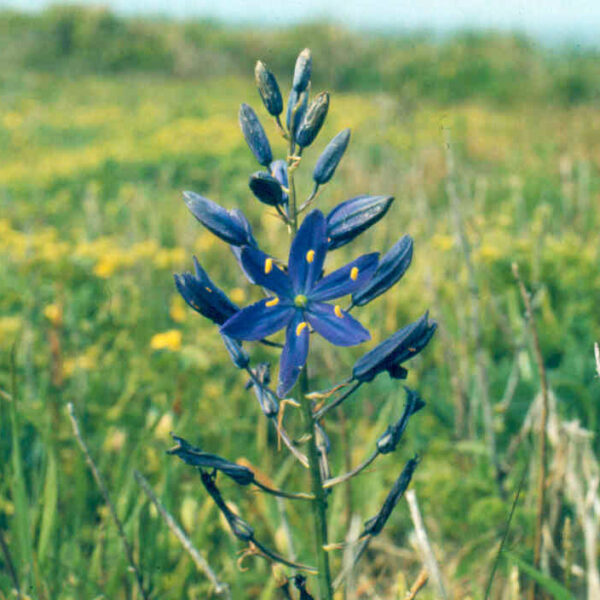Great Camas
Camassia leichtlinii (Baker) S. Wats. ssp. suksdorfii (Greenm.) Gould

overview
Perennial herb from a deep, egg-shaped bulb 2-4 cm long; flowering stems 20-100 cm tall, smooth. Leaves: Basal leaves several to numerous, linear-lanceolate and grass-like, to 60 cm long, 1-2 cm wide, smooth, sheathing at the base, the margins entire; stem leaves lacking. Flowers: Inflorescence a terminal raceme of five to many, stalked flowers, the stalks 1-4 cm long, spreading in flower, spreading to ascending in fruit; flowers pale to deep blue, rarely white, of six similar, distinct, petal-like segments (tepals), the tepals 20-40 mm long, 5-10 mm wide, twisting together over the ovary when withered; six stamens; one three-chambered pistil. Fruits: Capsule fruits, egg-shaped to oblong, cross-ridged, 1-2.5 cm long; fruiting stalks often longer than bracts, spreading to ascending, curved in towards stem; seeds several to many, shiny black, 2-4 mm long (Douglas et al., 2002). Photo by Emily Gonzales.
family
Liliaceae
ecological setting
Vernally moist meadows in the lowland zone (Douglas et al., 2001). Grassy slopes and meadows (Pojar and Mackinnon, 1994).
nutrients
Nitrogen-rich soils (Klinka et al., 1989).
moisture regime
Dry to moderately moist soils (Klinka et al., 1989).
shade tolerance
Shade-intolerant (Klinka et al., 1989).
landscaping
Use in meadows, grassy slopes and banks. Showy bloom with attractive seed heads. Very tough plant for exposed, hot dry sites once established (S. Bastin, personal communication). Use in containers or along pond edges (B. Costanzo, personal communication).
additional info and photos
For more information and pictures, visit the E-Flora BC website at www.eflora.bc.ca.